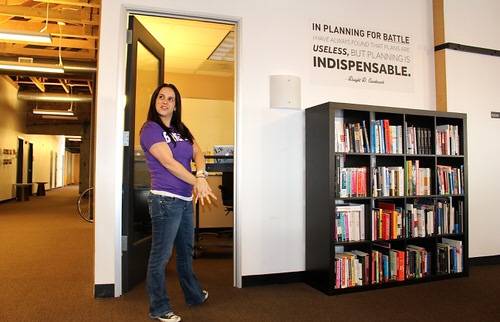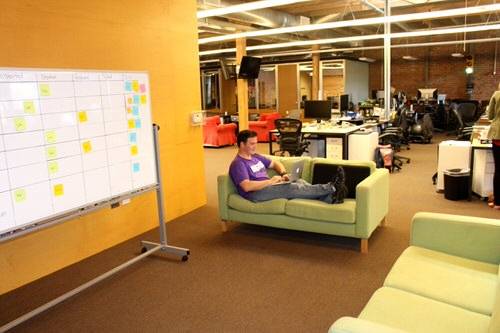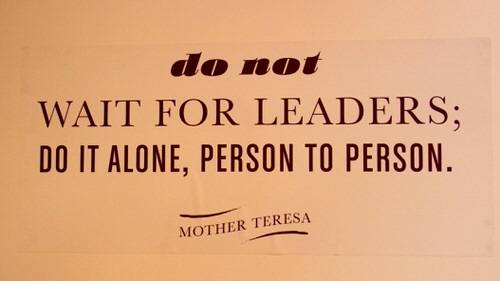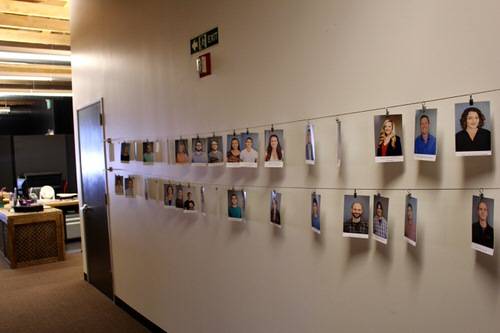ReadWrite’s Inside Tech series takes a close look at the workspaces and office culture of companies creating new technologies.
What if your work mattered?
That question lingered in the air for me as I walked out of the doors of Brigade Media.
The rhetoric of changing the world runs like raw sewage down the streets of San Francisco. When you’ve lived in this town as long as I have, the stink of broken promises no longer even registers on your nose.
I found something different when I walked into Brigade’s office in the city’s SoMa district, a place that might as well have been zoned for startups. The address was familiar to me: It had housed two companies I’d covered before, a ghostly whisper of the tech scene’s enduring transience.
What I found was hope—hope that a small group of people building technology, organizing themselves in new ways, could change society.

A Brigade Without Brigadiers
You probably haven’t heard of Brigade, because it’s still building a tool it hopes to launch next year. This isn’t a company working on a minimally viable product to generate vanity metrics to secure another round of funding. Instead, Brigade’s engineers are writing software that they hope will make it easier to organize around political causes.
They’re keeping mum about its details, though I gleaned a few. After some game tries at grilling them about what they’re building, I quizzed them instead about how they’re building it.

First, despite the name, Brigade is far from military in its organization. The only martial metaphor you’ll find in the office is a quote from Dwight D. Eisenhower:
In preparing for battle I have always found that plans are useless, but planning is indispensable.
Brigade’s chief technology officer, John Thrall, came from a place full of plans: He previously worked at Yahoo for 11 years. (I should disclose here that Thrall and I attended the same high school, though at different times.)
At Yahoo, Thrall and his colleagues had to come up with plans like “reference architectures”—detailed schemes for what a product’s codebase will look like after launch, how many users it will have, and how many servers it will need.

That idea went over like a lead balloon with Thrall’s engineers—a team made up of a mix of veterans from Causes and Votizen, two online-organizing startups Brigade acquired last year, as well as new recruits.
“One person told me, ‘I think this whole reference architecture thing is a waste of time,'” Thrall recalls.
That was Tom Dooner, a Brigade engineer, who credits Thrall with getting him to confess his doubts.
“To John’s credit, he’s one of the most perceptive people I’ve ever met,” Dooner says. “He will get feedback out of you. He knows what you’re thinking.”
Ultimately, Dooner concluded Thrall had been right to push for a reference architecture when it came time to shop around for a cloud service that would run Brigade’s code: “It gave a way to compare very different things.”
We Are Family

Brigade’s 25 engineers aren’t broken up into squadrons or platoons. Instead, they belong to multiple “families.” (This is San Francisco, after all.)
“There’s no right structure for an engineering team,” says Thrall. “It really depends on where you are in product development. We have things that are pods, that are product-focused or feature-focused. That’s your first family.”
The second family engineers belong to are working groups—say, of developers familiar with Apple’s iOS or Google’s Android operating system, who get together to make decisions specific to those platforms. At Yahoo, one of Thrall’s last duties was to set up similar working groups for its mobile apps.

Brigade’s pods and working groups are largely autonomous, racing to the next “rally point,” Brigade’s term for internal product milestones. They make their own way, as long as they get there on time. A pod might make a decision on how a product feature will work, while a working group more typically makes decisions around internal tools and architecture.
“On a meta level, I’m a huge fan of decentralized development,” says Thrall. “You want the team to decide on their own how they code. I can’t think of an example where those working groups came to a decision on their own that I would have disagreed with.”
Having both pods and working groups may sound more complex than a straightforward organization by departments or product groups, but it creates “opportunities for leadership across the organization,” says Thrall.
Decisions, Decisions
“I’ve found there is a lot of decisionmaking by consensus,” says Mateo Banerjee, an engineer who joined Brigade in August after working at Beats Music and Google. “There’s less deferring to a tech lead than at other companies. There’s a lot of importance placed on documenting your decisions and getting buy-in.”
At other startups, Banerjee observes, “there’s this bias towards making decisions without justifying them.”
While pods and working groups have autonomy, they’re expected to document all of their decisions via a mailing list.

“I think that overhead actually costs us less than making a decision we have to reverse later,” says Emily Leathers, Brigade’s director of engineering.
Leathers points to the time her team took to decide on a cloud service: “That’s a good example of slowing down a bit and making the right choices. It’s easy to lean on your infrastructure providers and be stuck with their way of doing things.”
Instead, Brigade’s back-end engineers figured out ways to “abstract the difference between cloud providers,” says Dooner. That cost some time, but Brigade hopes it will save them money if they ever need to switch.

Brigade’s Charge
There are hints of Brigade’s ambitions in its organization and its job listings. It plans to launch mobile apps—iOS and Android—as well as a website. Messaging, including mobile push notifications and email, must be a key component of its organizing tool, given the team dedicated to that function. And it’s expecting lots of people on Day One, given its work on its back-end operations.
Plenty of engineers have taken a stab at fixing the political system through code over the years—you’d have to be a ’90s veteran to remember early efforts like E-The People. Causes, one of Brigade’s predecessor companies, hoped to ride the social wave through Facebook’s app platform. Perhaps Brigade can seize this mobile moment where others failed.
What struck me about my visit to Brigade was the genuine, unfiltered passion its engineers had for their project.
“I go and talk to friends and family members and there’s this resounding [response]: ‘Yes, we need that,'” says Leathers. “That’s daunting. How do you break through that barrier where it’s easy to use and makes sense?”
Before joining Brigade, Banerjee worked in his spare time on a project to engage people on the topic of climate change by mapping flood-prone areas. But there were limits to what he could do as a volunteer coder.
“Lots of civic-minded projects for better or for worse are small groups of people hacking things together on nights and weekends,” he says. “Software engineering is hard. If you’re a software engineer, it takes a lot of dedication to build something cool. If you work 10 hours a day on your job, you don’t have another 10 hours a day [to give].
“I didn’t know places like Brigade existed,” says Banerjee. “This was exactly what I wanted to do.”

Photos by Owen Thomas for ReadWrite










